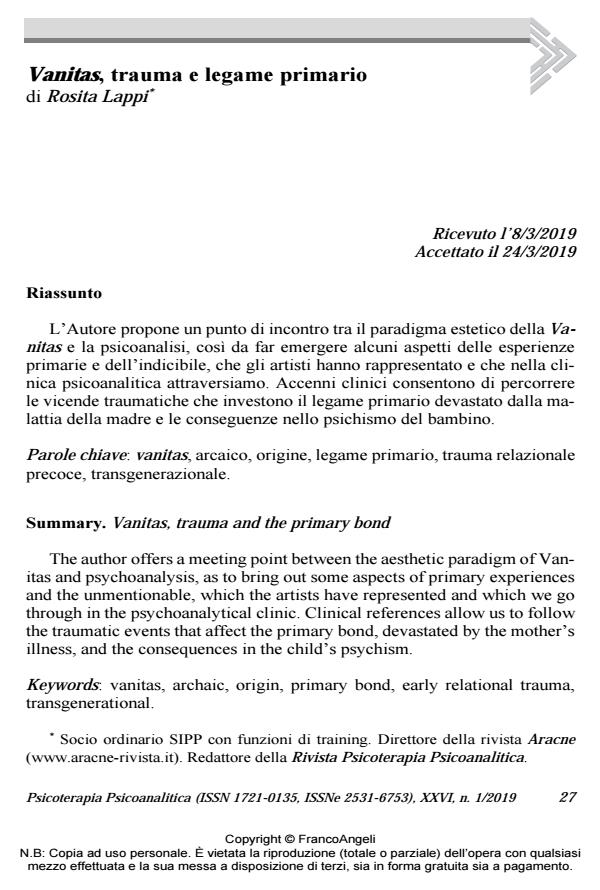Vanitas, trauma and the primary bond
Journal title PSICOTERAPIA PSICOANALITICA
Author/s Rosita Lappi
Publishing Year 2019 Issue 2019/1
Language Italian Pages 18 P. 27-44 File size 205 KB
DOI 10.3280/PSP2019-001003
DOI is like a bar code for intellectual property: to have more infomation
click here
Below, you can see the article first page
If you want to buy this article in PDF format, you can do it, following the instructions to buy download credits

FrancoAngeli is member of Publishers International Linking Association, Inc (PILA), a not-for-profit association which run the CrossRef service enabling links to and from online scholarly content.
The author offers a meeting point between the aesthetic paradigm of Vanitas and psychoanalysis, as to bring out some aspects of primary experiences and the unmentionable, which the artists have represented and which we go through in the psychoanalytical clinic. Clinical refer-ences allow us to follow the traumatic events that affect the primary bond, devastated by the mother’s illness, and the consequences in the child’s psychism.
Keywords: Vanitas, archaic, origin, primary bond, early relational trau-ma, transgenerational.
Rosita Lappi, Vanitas, trauma e legame primario in "PSICOTERAPIA PSICOANALITICA" 1/2019, pp 27-44, DOI: 10.3280/PSP2019-001003